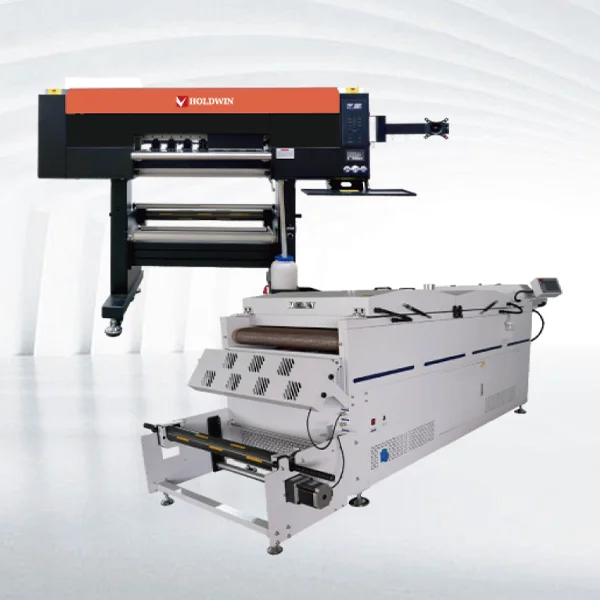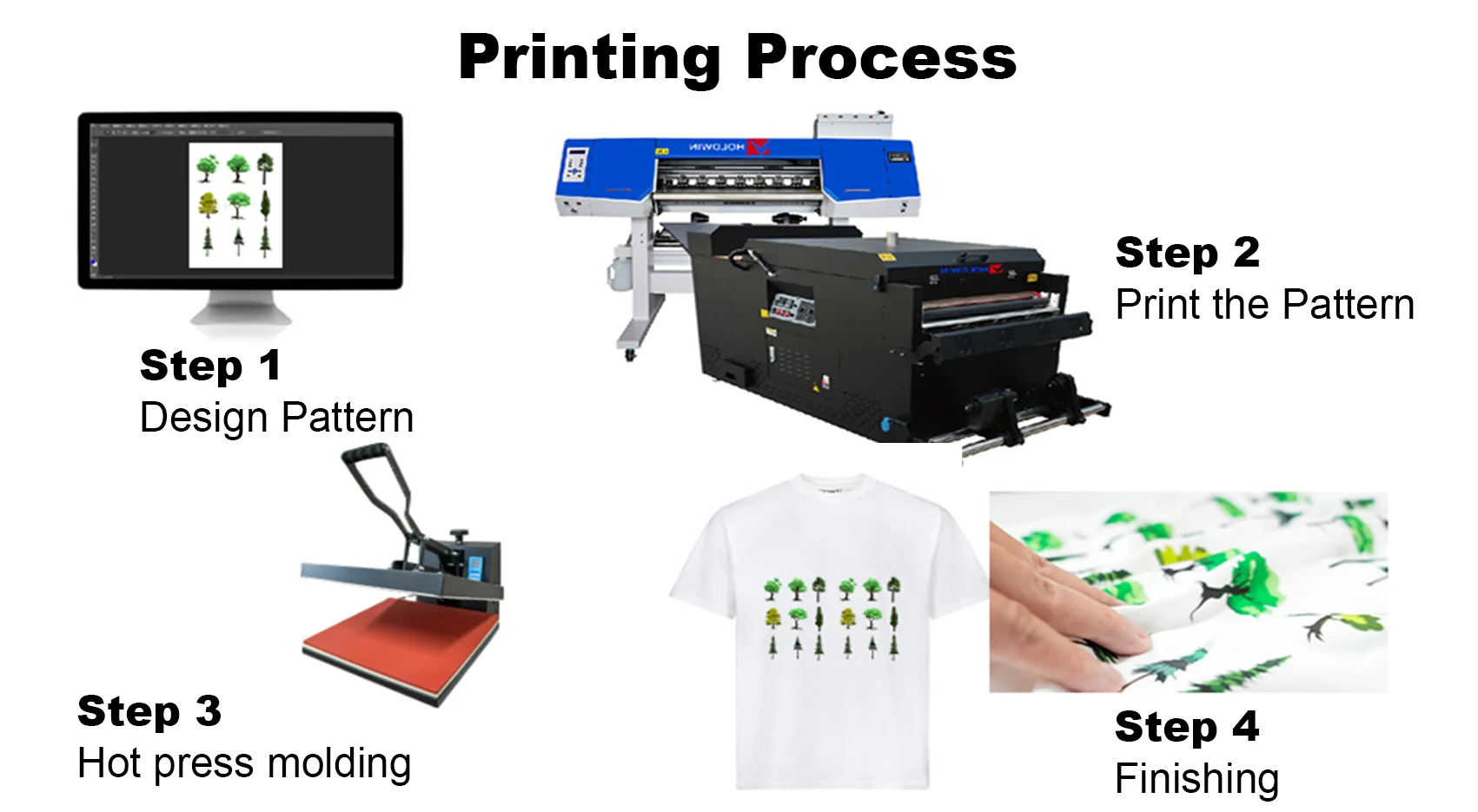

Digital Transfer Film (DTF) printing is a flexible and handy way to put bright, colorful designs on all sorts of things, like clothes, plastic, leather, and even ceramics. It doesn’t need any special prep work on the material. You print the design on a special PET film using CMYK and white inks, add sticky powder, heat it, and press it onto the item. Digital printing DTF beats other methods, like DTG or sublimation, because it works on many materials, saves money, and makes tough, vivid prints. Zhiyu’s strong machines, with 4 to 16 printheads, are great for businesses wanting top-notch results in big batches. Soon, we might see greener inks and smart machines with AI.
Digital printing DTF is a cool method that lets you put full-color, sharp pictures on lots of different surfaces with a heat press. Unlike old-school printing, it skips pre-treating the material. Here’s how it goes: you print your design on a special PET film with water-based inks, sprinkle on some sticky powder, heat it to make it ready, and then press it onto your item with heat.
This is super helpful for businesses that want bright, long-lasting prints on clothes, bags, or hard stuff like mugs. It’s part of a new wave of digital tricks. The best part? You just stick the design onto the surface after printing. It’s quick, easy, and needs no extra steps.
If you know about DTG (Direct-to-Garment), sublimation, or screen printing, you’ll see that digital printing DTF is way more flexible and saves time. DTG needs you to treat cotton fabrics first, but DTF works on cotton, polyester, and more without any prep. A 2024 report from Grand View Research says the DTF market is growing fast at 12.1% each year, doing better than DTG because it can handle so many materials. [Source: Grand View Research, “Digital Textile Printing Market Size, Share & Trends Analysis Report, 2023–2030”]
Also, DTF sticks to almost anything—plastic, leather, ceramics, glass, or wood. This makes it perfect for businesses that need to print on all kinds of products.
The digital printing DTF setup has a few key parts: PET films, CMYK and white inks, sticky powder, curing machines, and heat presses. Each part helps make sure the print looks great, sticks well, and lasts a long time.
Bright colors and strong prints come from how these parts work together smoothly.
The DTF process starts with getting your picture ready using software like MainTop or Flexprint. This software splits colors so they layer right, especially the white base for dark materials.
Here’s what happens next:

This process, called coil printing, is great for making lots of custom items fast.
PET films in digital printing DTF need to stay strong under high heat during pressing. They have a special coating to stop static, so the ink goes on smoothly without spreading or smudging.
DTF inks are water-based and made to be stretchy and bright on many materials. The white ink is super important. It makes a solid layer under the colors, so they pop on dark surfaces.
The sticky powder, made of thermoplastic polyurethane, melts when heated and bonds the ink to the material during pressing. This makes prints tough against scratches and wear.
Yes! Digital printing DTF works great on cotton, polyester, blends, leather, ceramics, metals, and wood. It can handle flat surfaces or curved items up to 18cm wide.
This makes it awesome for businesses making clothes, gifts, or promo items.
For sure. You don’t need special chemicals or lots of screens like in old methods, so you save time and materials. Plus, one DTF printer can do many kinds of jobs without changing setups. That’s a big win for keeping things simple and fast.
Absolutely. New features like bronzing, shiny silver, waterproofing, and even oil resistance make prints stand out. The strong bond between the powder and ink keeps colors bright even after many washes.
If you’re growing your business or want to print on both clothes and hard items, Zhiyu’s digital printing DTF machines are top-notch for pro-level work.
Zhiyu makes tough machines with 4 to 16 printheads. They have cool features like precise film feeding, white ink mixing to prevent clogs, and quiet rails for smooth operation. These machines handle everything from T-shirts to mugs while keeping colors sharp even in big batches. Zhiyu’s great support team helps you fix problems fast, so you’re never stuck.
If you’re making small or medium batches, like T-shirts or bags:
If your business is growing and needs more speed:
For big shops with lots of orders or different products:
For huge factories needing super-fast production:
All these machines have smart features like auto white ink mixing and ink level alerts to keep things running smoothly.
Yes! People are working hard on greener inks that last longer and are better for the planet. You’ll also see inks that stretch more, which is great for sportswear.
For sure. Film feeding is already partly automatic, but new machines will have conveyors and smart systems to place films perfectly every time, even for big orders.
Smart machines will warn you before problems like clogs happen. You’ll get dashboards to check print jobs from anywhere. Plus, machines will tweak heat settings on their own based on the room’s conditions. This cuts downtime and keeps prints steady.
Q1: Can I use digital printing DTF on non-textile surfaces?
A: Yes! It sticks to plastic, glass, wood, metal, leather, and ceramics, so it’s great for more than just clothes.
Q2: Do I need pre-treatment chemicals when using DTF printers?
A: Nope! No pre-treatment needed, which makes DTF way simpler than DTG or sublimation.
Q3: What’s the expected durability of prints made via digital printing DTF?
A: With good curing and pressing, prints are waterproof, sun-proof, scratch-proof, and stay bright even after lots of washes.
